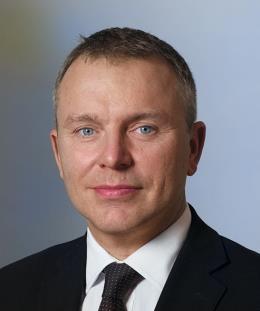The philosophy of placemaking
15 June 2022

The built environment industry is not shy of using the word ‘placemaking’. It appears in much of the industry’s brochures and corporate reports and is widely used to describe an approach to urban development that places people at its heart. As the global COVID-19 pandemic has shown, the built environment can play a critical role in our health and our wellbeing, and when you factor in the other crucial agendas of our time – climate change and sustainability – it seems appropriate to ask what we mean by placemaking and what its future holds.
Although the term is relatively modern, the concept behind it is not a new one. Placemaking has existed for as long as modern society has been around and can be seen in the creation of civic buildings and public spaces wherever people had a need to congregate – for democracy, for trade, for education or for entertainment.
As an urban design philosophy, placemaking emerged in the 1960s and early 1970s to describe an approach to urban design that placed the needs of individuals or communities first, as seen in iconic community architecture schemes such as Ralph Erskine’s Byker Wall development in Newcastle, or the reshaping and remodelling of many of the UK’s towns and city centres in the 1970s, 80s and 90s.
What do we mean by placemaking?
For many of today’s built environment practitioners, placemaking is a term that is in danger of being overused. As David Lockyear, Head of Campuses for British Land, told me recently, “it’s a catch-all term that means a lot of different things to a lot of different people, and its outcome can vary hugely as a result.” For him, placemaking is more than simply nice design: it’s a philosophy, not a process. “Placemaking has to be something that is inspirational, that strengthens human connections, that includes the cultural and social elements of what defines a sustainable space.”
British Land’s Broadgate redevelopment in the City of London is a high-profile example. This office-led campus site is undergoing a major transformation, and embodies many of the principles that underpin British Land’s placemaking approach. “We want to broaden Broadgate to be an inclusive, dynamic place which fosters collaboration,” says David. “Today, as the needs of businesses occupying those buildings – and the needs of employees – has changed, our focus is on deepening those social and personal connections and creating a clearer identify for the place.”
Does it bring value?
A widely held view is that placemaking costs more to deliver, but when done properly, any additional cost should be balanced by additional value created. According to Bek Seeley, Managing Director, Development for Lendlease in Europe, placemaking can be expensive if you focus too closely on an individual building, a design, or the quality of materials, and less on the overall long-term investment. “Of course you need everything to be a reasonable standard throughout the totality of the place”, says Bek, “and you need to make sure there is a commercial and durable funding model in order to maintain it. But it really shouldn’t cost more. If people like the place, its value will go up.”
Built environment practitioners are also having to seriously consider the impact of the digital economy on placemaking. “In an era when you can pick up your phone and order anything quickly, it’s having a huge impact on the way that our public realm is being delivered,” says Selena Mason, Director of Masterplanning at Lendlease. “We need to make sure that the public realm gives you a lovely experience sitting outside a restaurant, while also enabling that restaurant to seamlessly offer delivery services, which they need to do because that’s the business model now.”
Localism is also becoming important in placemaking. In many places, the pandemic has helped people discover their communities for the first time. “People don’t want to lose that,” says Bek Seeley. “Also, with petrol now costing so much, people don’t want to drive because it’s so expensive. This puts the focus on why your workplace is so far from your home.
What has become clear is that placemaking today starts and ends with people. Selina Mason at Lendlease summed it up the best when she told me: “Bricks and mortar are the chassis for the place, but it’s the people – the way that they live, work and play – that really make the difference.
Richard Vernon has been finding out what "placemaking" means for clients in our latest podcast series. In episode 1 Richard discusses how to maximise the social, cultural and financial outcomes of placemaking, with British Land: you can listen to the episode HERE . In episode 2, Richard chats with Lendlease about what the "P" in placemaking really means – people: you can listen HERE.
The information provided is not intended to be a comprehensive review of all developments in the law and practice, or to cover all aspects of those referred to.
Readers should take legal advice before applying it to specific issues or transactions.


Sign-up to select your areas of interest
Sign-up